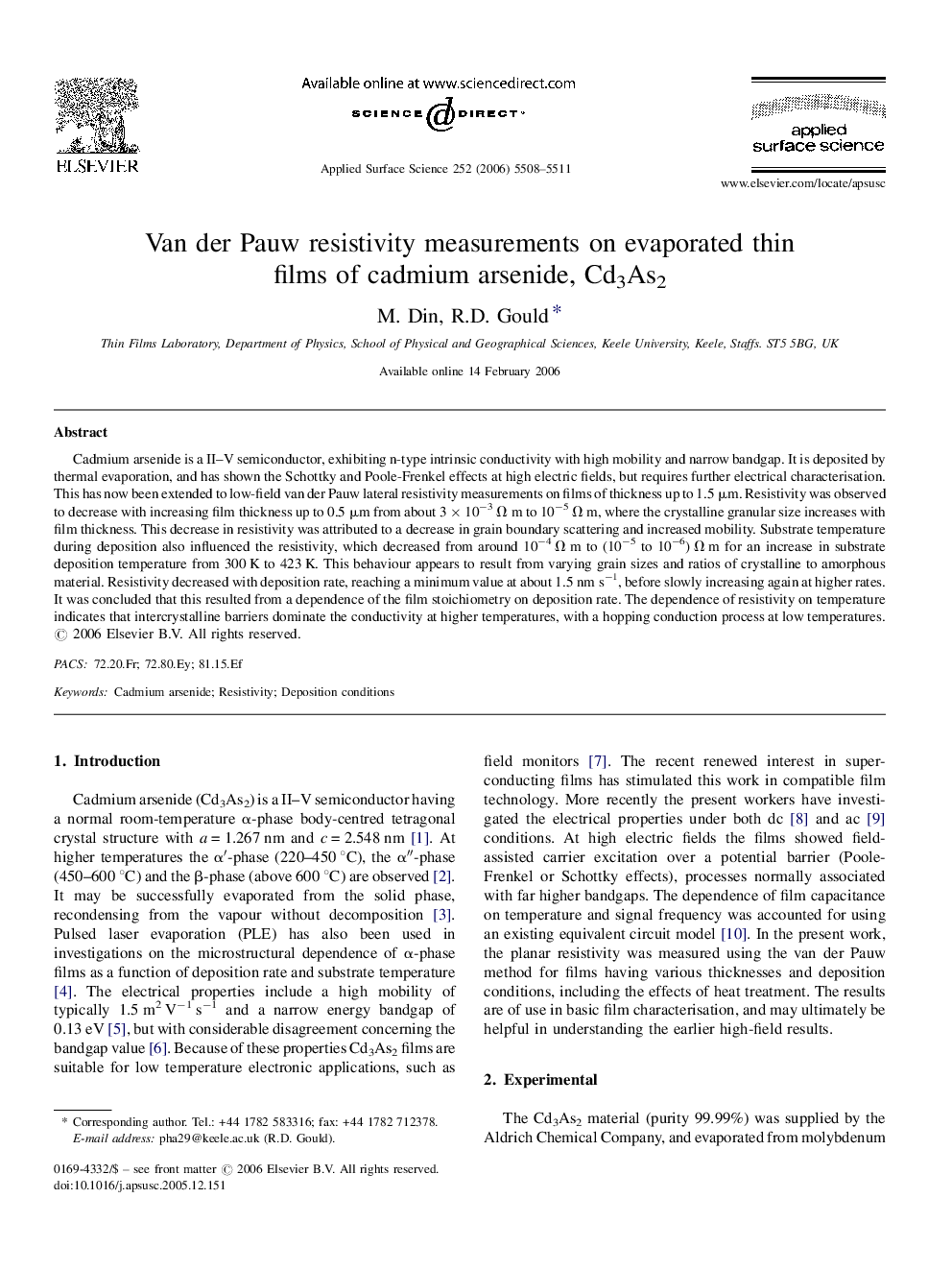| Article ID | Journal | Published Year | Pages | File Type |
|---|---|---|---|---|
| 5366347 | Applied Surface Science | 2006 | 4 Pages |
Cadmium arsenide is a II-V semiconductor, exhibiting n-type intrinsic conductivity with high mobility and narrow bandgap. It is deposited by thermal evaporation, and has shown the Schottky and Poole-Frenkel effects at high electric fields, but requires further electrical characterisation. This has now been extended to low-field van der Pauw lateral resistivity measurements on films of thickness up to 1.5 μm. Resistivity was observed to decrease with increasing film thickness up to 0.5 μm from about 3 Ã 10â3 Ω m to 10â5 Ω m, where the crystalline granular size increases with film thickness. This decrease in resistivity was attributed to a decrease in grain boundary scattering and increased mobility. Substrate temperature during deposition also influenced the resistivity, which decreased from around 10â4 Ω m to (10â5 to 10â6) Ω m for an increase in substrate deposition temperature from 300 K to 423 K. This behaviour appears to result from varying grain sizes and ratios of crystalline to amorphous material. Resistivity decreased with deposition rate, reaching a minimum value at about 1.5 nm sâ1, before slowly increasing again at higher rates. It was concluded that this resulted from a dependence of the film stoichiometry on deposition rate. The dependence of resistivity on temperature indicates that intercrystalline barriers dominate the conductivity at higher temperatures, with a hopping conduction process at low temperatures.
